11,601 Swabs, 2,543 Wipes: How NASA Spent the Last 7 Years Protecting Mars from Humans
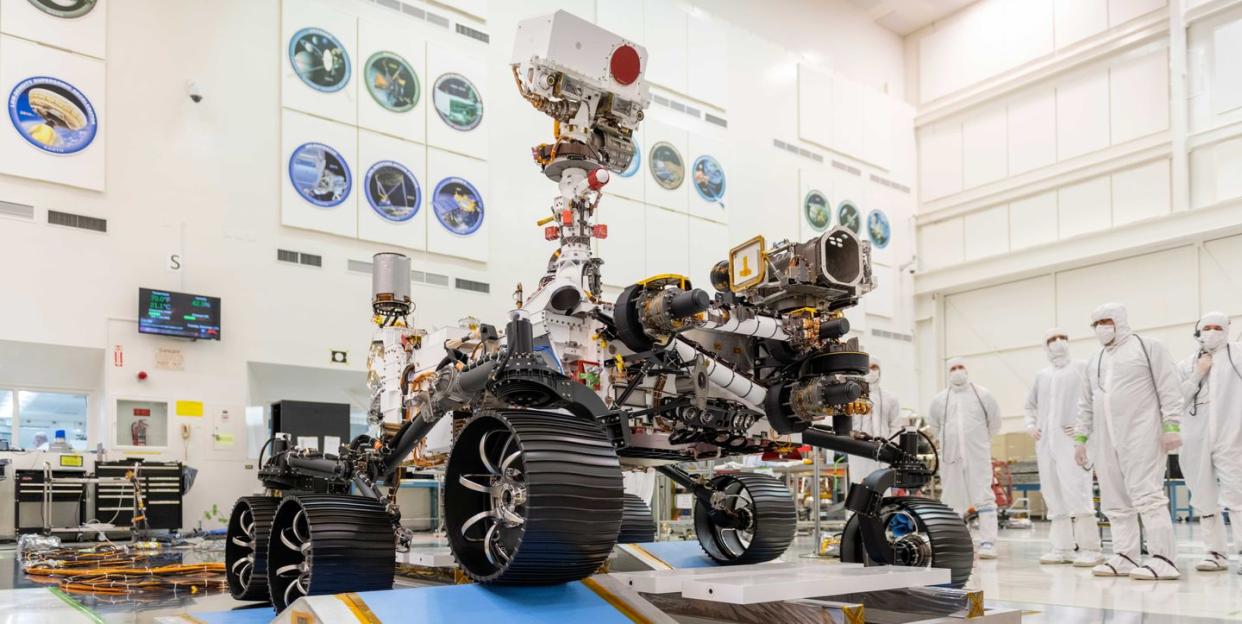
Here on Earth, as we continue to obsess over cleanliness and eradicating microscopic viruses, perhaps we should be turning to NASA for advice.
Despite being in the midst of a global pandemic, the space agency launched the $2.4 billion Mars Perseverance Rover to the Red Planet July 30, 2020. Later this week, the rover finally lands on Mars. On the Red Planet, the rover will look for microscopic life and collect rock and soil samples that will one day (eventually) be sent back to Earth for future study.
What the rover won’t be doing is introducing Earth’s microscope life to Mars.
Cleaning practices, sanitary procedures, and sterilization methods instituted by NASA decades ago all but guarantee the rover will be clean of nearly everything that could potentially compromise the mission to our planetary neighbor.
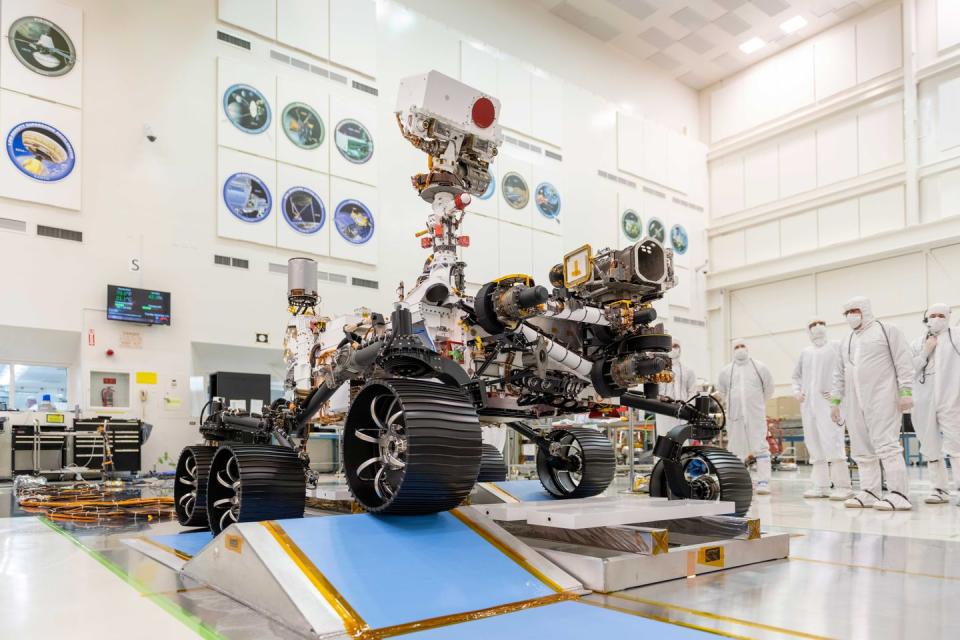
“Viruses, e. coli, all the things we find on our skin, they are all puny wimps,” says Moogega Stricker, NASA Planetary Protection Engineer at Pasadena’s Jet Propulsion Laboratory. Everything they’ve done since the mission began seven years ago, she says, has made the spacecraft resilient against any and all contamination.
Since humans first started making our move to the cosmos, we’ve tried to save space from our germy nature.
“We are a cesspool of bacteria,” says Stricker. “But it’s our job to protect Mars from us [humans].”
The Origin of the Clean Room
Planetary protection is the concept of preventing biological cross contamination—to protect our celestial neighbors from us and to protect us from any contaminants we may bring back from our journeys to space.
In the winter of 1967, more than two years before Neil Armstrong first walked on the moon, the United States, Soviet Union, and the United Kingdom all signed the “Outer Space Treaty.” Since then, more than 100 other nations have signed on to the treaty.
Besides prohibiting nuclear weapons in space and not allowing countries to occupy planets, it asserts signing nations must “conduct exploration of [the moon and celestial bodies] so as to avoid their harmful contamination.”
The reason for this provision is mainly two-fold. One, it’s just good science.
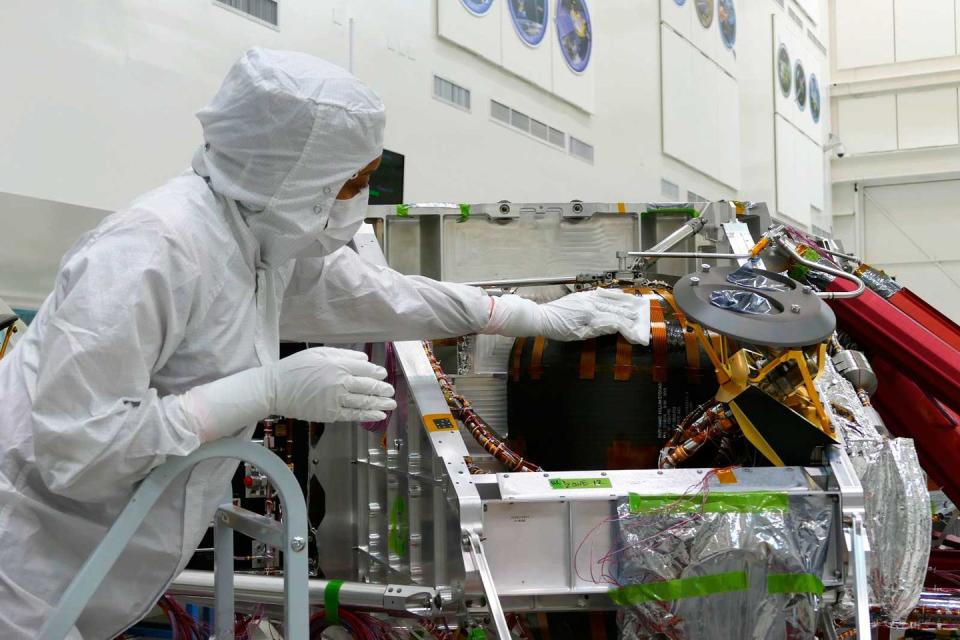
How could we possibly know what we are actually discovering if there’s always a potential to confuse what’s extraterrestrial and what’s just lint from someone’s Levi’s on Earth?
Two, it’s ethical. As we know from here on Earth, our ecosystems are sensitive and highly susceptible to change. By introducing microbes, even ones thought to be harmless, to a world where those microbes may be unknown, we could be inadvertently destroying it.
With the 1957 launch of Sputnik kicking off the space age, NASA has had a number of trial and errors in its attempts to protect space.
In 1959, just as NASA was preparing for its first manned missions to space, an agency-issued edict called for the complete “sterilization” of everything being launched into space. Interpreted strictly, that meant every microorganism in and on the space vehicle needed to be killed or otherwise removed. NASA turned to the food industry as a model for their methods, since that industry had plenty of experience trying to avoid contamination.
That turned out to be unwise.
During NASA’s unmanned Ranger program in the early 1960s, they attempted to adhere to the complete sterilization edict by subjecting the crafts to intense, life-killing heat.
“They baked them...at very high temperatures,” says Erik Conway, historian at NASA’s Jet Propulsion Laboratory in Pasadena, California. However, while it solved one problem, it caused another. “That proved to be very damaging to the electronics,” says Conway.
While it could never be totally proven, many blamed the “baking out” of spacecrafts as a reason the Rangers had performance issues.
NASA admits the frying of Ranger 3's electronics probably caused it to miss its lunar target by tens of thousands of miles while debris inside of Ranger 4 due to melting caused it to crash into the moon. Ranger 5 had a power failure.
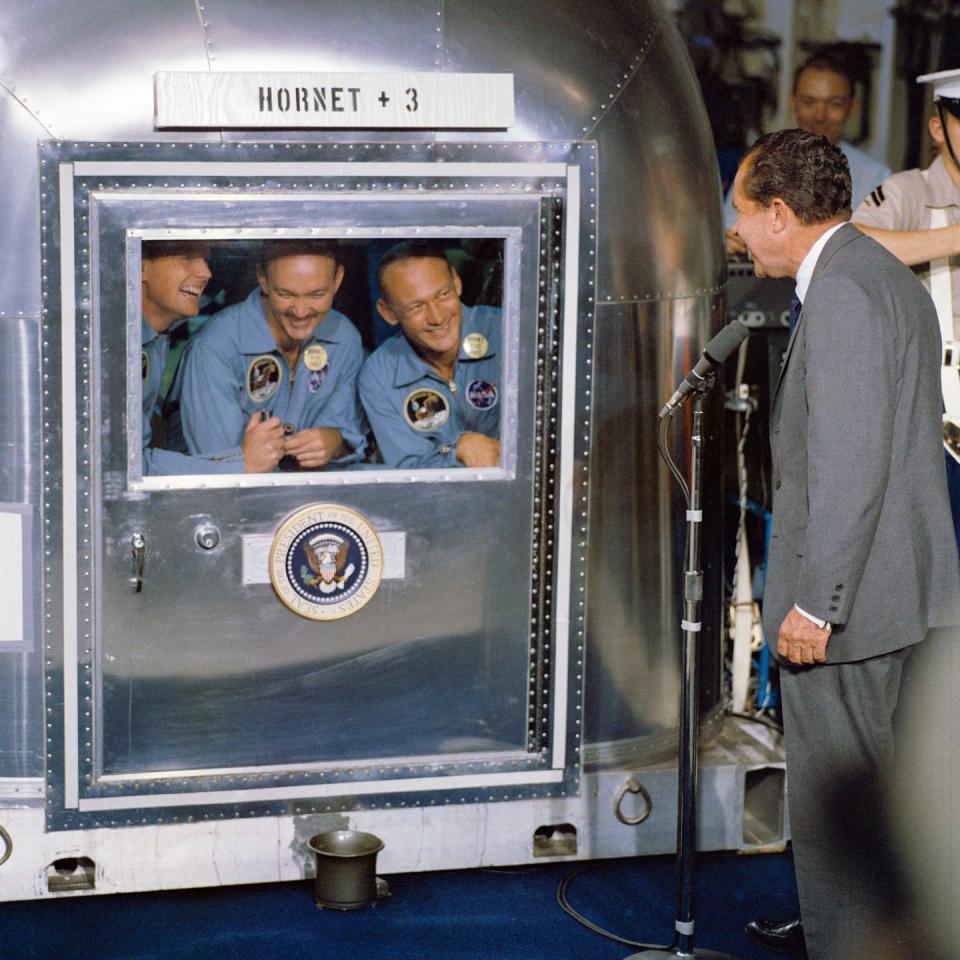
As NASA moved to manned missions with the Mercury and Apollo programs, sterilization and contamination became less of a concern compared to us bringing something dangerous back home. In 1962, Carl Sagan wrote of a “remote possibility that lunar explorers might bring deadly organisms back with them that could destroy life on Earth.”
A space-germophobic Congress authorized about eight million dollars to build the Lunar Receiving Laboratory (LRL) to quarantine and analyze both the astronauts and the moon rocks they picked up on their trip to make sure that they would not destroy life here.
Of course, as it turned out, there was no material on the moon that posed a danger to us Earthlings. Even if science-fiction wants us to think otherwise.
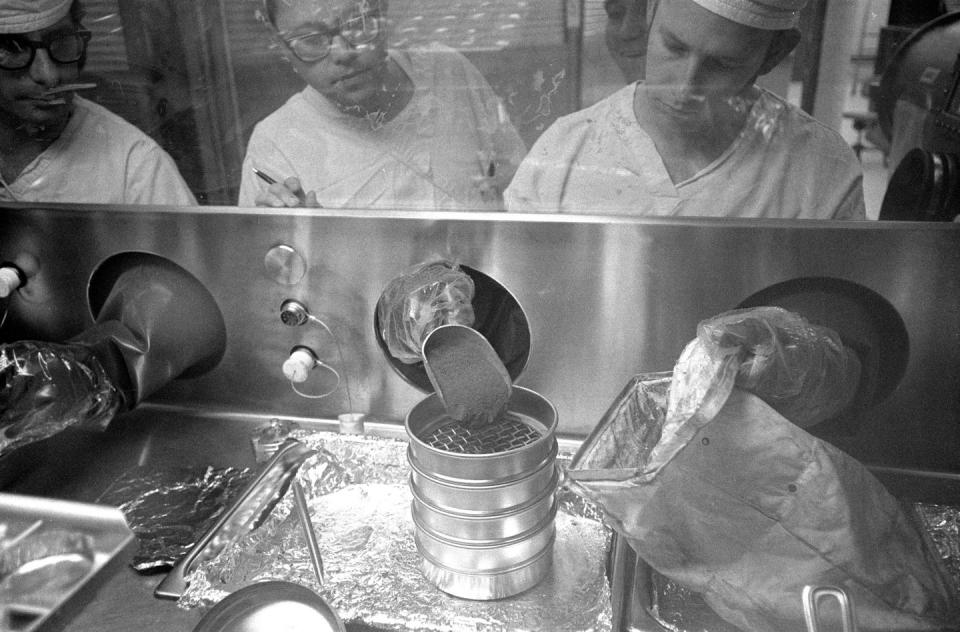
As manned missions wound down in the 1970s (for the time being), we started to send spacecraft to further reaches of our solar system, so NASA engineers and scientists refocused on spacecraft hygiene, this time looking to the weapons industry as a model.
The idea of clean rooms actually started in the later years of the Ranger program, which were essentially missile shots fired at the moon.The conceit is simple: It’s easier to keep microbes out then get rid of them when they are already there.
Pasadena’s Jet Propulsion Laboratory, which first opened in 1961, still houses construction for NASA’s robotic spacecraft. It’s also the location of the agency’s first clean rooms. In 1973, High Bay 1 on JPL’s campus became a Class 10,000 clean room meaning there are fewer than 10,000 particles of 0.5 microns (which is about 200 times smaller than the width of a human hair) or larger in size per cubic foot of air volume in the room.
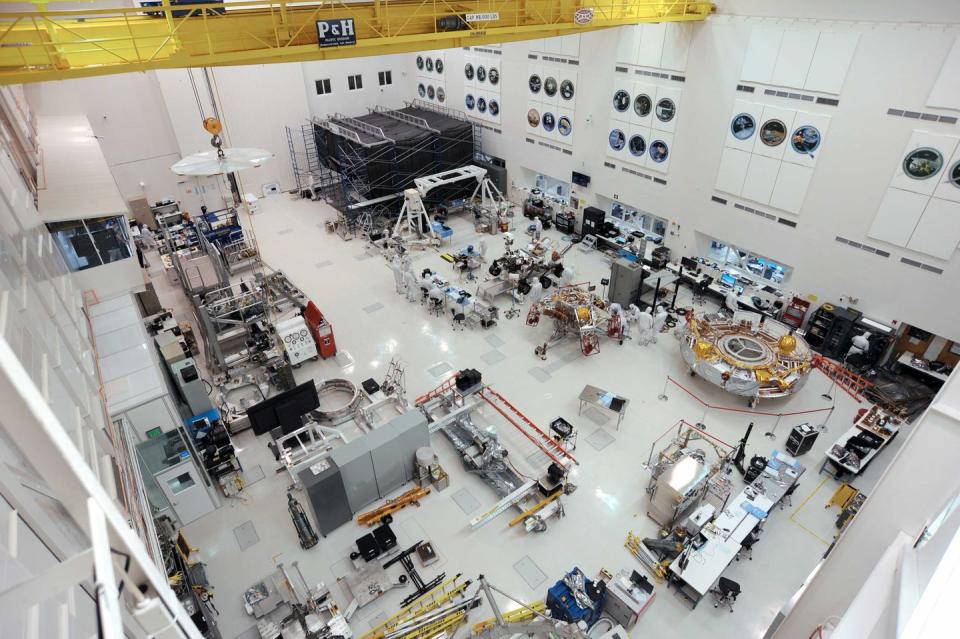
They borrowed the concept from the weapons manufacturing business. “Missiles also have to be kept clean. They have very high acceleration and wouldn’t want particles floating around inside of the electric compartments that might get stuck,” says Conway.
NASA creates their clean rooms through obsessive monitoring, extensive filtration systems, consistent cleaning with disinfectants, hydrogen peroxide, and alcohol, and an elaborate decontamination process for those who need to work there (including the wearing of bunny suits, masks, and hair nets).
There are even more granular requirements.
“Technicians and engineers that work in the room have to shower the night before, so that the oils on their skin can form and they are less likely to shed skin,” says High Bay 1’s facilities manager Roger Francis. “And also no perfumes, shampoos, lotions, or white deodorant... there’s concern about the volatiles (chemical compounds with low boiling points) that could condense on the metal tubes.”
Every significant unmanned NASA spacecraft from the 60 years has spent time inside of High Bay 1 and, later, High Bay 2 (which was turned into a clean room in 1974). This includes Voyager 1, Voyager 2, the Galileo orbiter, the Mars Curiosity rover launched in 2011, and this new rover—Perseverance.
Keeping Mars Clean
Moogega Stricker had spent an inordinate amount of the last few years at JPL.
“I’m stalking the space craft,” she says with a laugh speaking with Popular Mechanics back in May 2020. While it was still a little over two months before launch, at that point, NASA were about 95% done with preparation. “But that remaining 5% is a lot.”
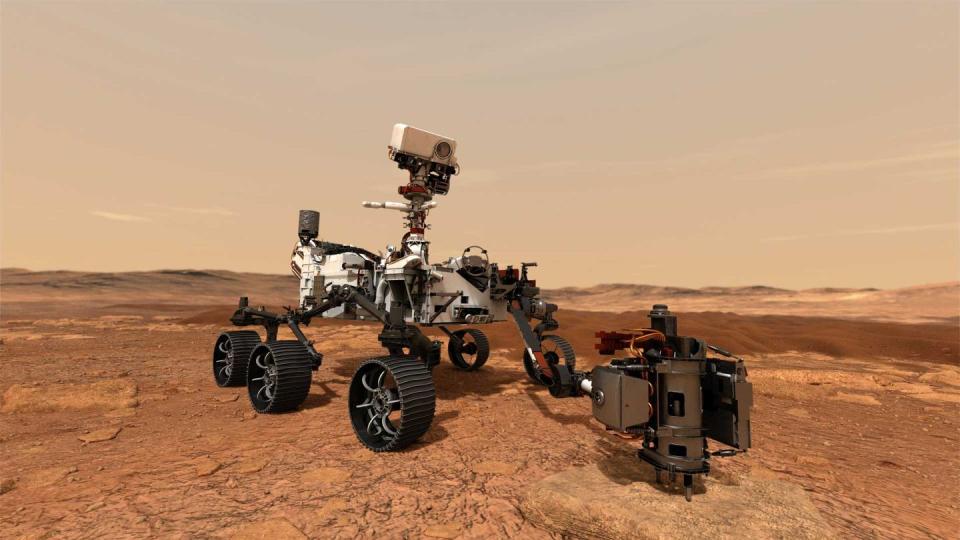
The remaining preparations included continued testing and sampling of materials to make sure it remains clean. At that point, they had collected 11,601 swabs of the spacecraft and 2,543 wipes (two different methods of collection, Stricker explains). For comparison, over the entire course of the 2011 Curiosity mission, they collected 3,208 swabs and 942 wipes.
The pandemic changed Stricker’s job mostly on the personal side. As the head of her team, she says she spends a lot more time meticulously planning schedules to make sure folks are not interacting with one another unless needed, and everyone stays healthy off the clock. “We are just as meticulous about ourselves as our spacecraft,” she says.
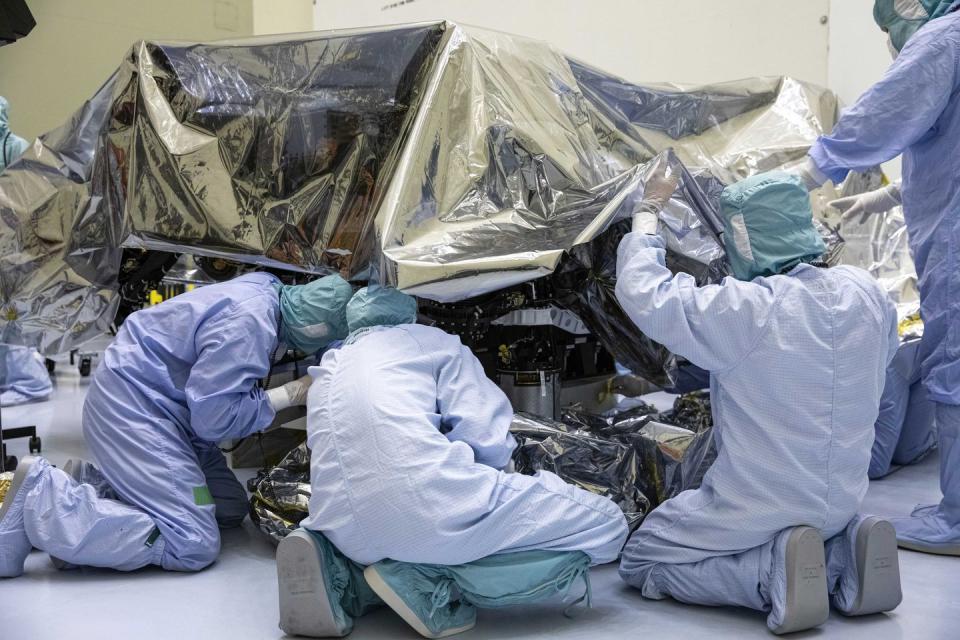
Today, NASA knows killing everything is an unattainable goal. “We don’t build a completely sterile spacecraft. That’s ridiculously impossible,” Stricker says. “But if you take all those microbes [on the craft]... it won’t even fit on the lens of your cell phone camera.”
This is achieved through clean rooms (both in Pasadena and Florida), but also more basic methods that sound identical to what we’ve grown accustomed to over the past few months. “Always wipe and sanitize with isopropyl alcohol,” Stricker says. “If you are bored, you wipe. It’s second nature at this point.”
They also use a method that NASA has used for decades. “A majority of components we [bake] at 110 degrees Celsius (230 degrees F) for 144 hours. That’s weeks. So, we are really killing it with fire,” says Stricker.
What they really worry about isn’t basic germs (or viruses), but bacterial endospores that mostly come from us humans. They can be found in our (or animals) guts. One of the more well-known bacterial endospores is one that can cause botulism. “They are a subset of microbes that can stay in this dormant vegetative state... for up to 10 million years or more. They’re very tough,” says Stricker.
There’s also the matter of an environment change. Before launch, the spacecraft needed to move from JPL in Pasadena to Kennedy Space Center in southeast Florida and, with that, came a change in the type of microbes found. “Everything that we track in from the outer environment can show up,” says Stricker, “And we have to adapt to that. Microbes in California are those that are typically found in dry, desert environments, but what we find here [in Florida] are those more common in wet environments.”
What does worry her are manned missions to Mars, which could happen within the next decade. There will be no way to control the microbes and bacteria that sheds off of us all the time. Humans can’t be baked, locked in a clean room, or wiped down with alcohol tens of thousands of times. We are, after all, organic matter.
Protecting Mars from humans may actually end up being a tougher mission than getting there. But regardless of how they get there, NASA will once again do what they have always done well: adapt to changing conditions to achieve what has previously seemed impossible.
You Might Also Like

